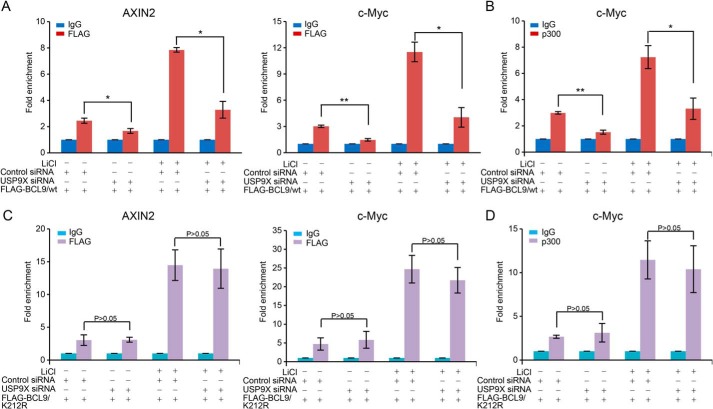Figure 5.
USP9X controls the recruitment of BCL9 and p300 to Wnt-signaling target gene promoters. A, MCF-7 cells with Dox-inducible expression of stably integrated FLAG–BCL9/WT were transfected with control siRNA or USP9X siRNA, and the cells were treated with 25 mm LiCl for 2 h. Soluble chromatins were collected for ChIP analysis using antibodies against FLAG followed by qPCR with primers covering the promoter of the indicated genes. Each bar represents the mean ± S.D. for three biological experiments. *, p < 0.05; **, p < 0.01, one-way ANOVA. B, experiments analogous to A were performed with antibodies against p300. Each bar represents the mean ± S.D. for three biological experiments. *, p < 0.05; **, p < 0.01, one-way ANOVA. C, MCF-7 cells with Dox-inducible expression of stably integrated FLAG–BCL9/K212R were transfected with control siRNA or USP9X siRNA, and the cells were treated with 25 mm LiCl for 2 h. Soluble chromatins were collected for ChIP analysis using antibodies against FLAG followed by qPCR with primers covering the promoter of the indicated genes. Each bar represents the mean ± S.D. for three biological experiments. p value is determined by one-way ANOVA. D, experiments analogous to C were performed with antibodies against p300. Each bar represents the mean ± S.D. for three biological experiments. p value is determined by one-way ANOVA.

